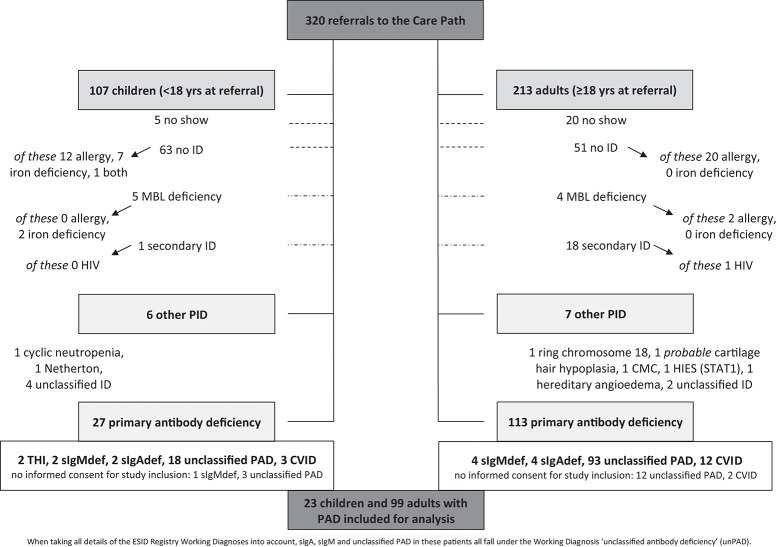Figure 1.
The population under study. Overview of all patients referred to the Care Pathway between February 2012 and June 2016 (inclusive) to answer the question “could this be primary immunodeficiency?” When taking all details of the ESID Registry Working Diagnoses into account, sIgAdef, sIgMdef, and unclassified PAD in these patients all fall under the Working Diagnosis “unclassified antibody deficiency” (unPAD) (16). Allergy, clinical symptoms, and proven sensitization by specific serum IgE and/or skin prick test; CVID, common variable immunodeficiency disorders (according to the ESID Registry working diagnoses); HIV, human immunodeficiency virus; Ig, immunoglobulin; iron deficiency, low iron stores, determined by serum ferritin level; MBL, mannose binding lectin; (other) (P)ID, (other) (primary) immunodeficiency (other meaning other than primary antibody deficiency); sIgAdef, selective IgA deficiency (according to the ESID Registry working diagnoses, but absence of clinical signs of T-cell deficiency was considered sufficient); sIgMdef, selective IgM deficiency (according to the ESID Registry working diagnoses, but absence of clinical signs of T-cell deficiency was considered sufficient); THI, definite transient hypogammaglobulinemia of infancy (the antibody deficiency has resolved during the period under study); unclassified ID resp. PAD, unclassified primary antibody resp. immuno-deficiency (according to the ESID Registry working diagnoses); yrs, years.

